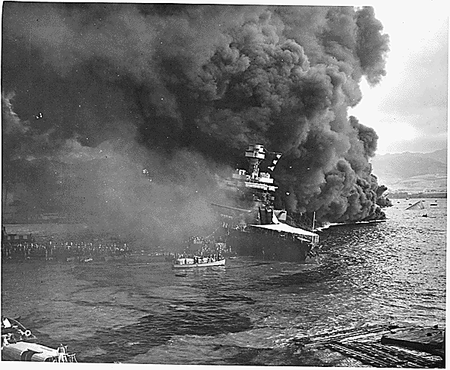It has been announced that US President Obama will visit Hiroshima. How will Japanese Americans, who found themselves in a complicated position following the outbreak of war between Japan and the US, react to this announcement?
Looking back, we can remember how many Japanese Americans were sent to internment camps after the war began. Many of them went on to serve in the U.S. military. There were a few who refused to pledge allegiance to America. The lives and hearts of many Japanese Americans were shaken between Japan and America.
It all began on December 7, 1941 (December 8 in Japan time), with the Japanese attack on Pearl Harbor in Hawaii.

"No-No Boy" begins with a prologue that explains the background of the story before the protagonist Ichiro's story begins. It uses several fictional examples to show the reader the social turmoil surrounding Japanese Americans immediately after the outbreak of the war and their reactions.
The preface begins thus:
"DECEMBER THE SEVENTH of the year 1941 was the day when the Japanese bombs fell on Pearl Harbor. As of that moment, the Japanese in the United States became, by virtue of their ineradicable brownness and the slant eyes which, upon close inspection, will seldom appear slanty, animals of a different breed."
(The Japanese bombs fell on Pearl Harbor on December 7, 1941. From that moment on, the Japanese in the United States, with their naturally yellow skin and slanted eyes - which are not slanted at all if you look closely - became a different kind of animal from other Americans.)
After this, several episodes are told that show the state of confusion. I will introduce them in order below and consider what they symbolize.
At the university, the professor is perplexed when faced with a brilliant Japanese student. Even though he thinks it is strange that a Japanese student is being treated so unfairly, there is nothing the professor can do about it.
In a bar, a drunkard called Japs despicable and said he was going to volunteer for the army. The landlord of the apartment where the man lived was Japanese, and the man was behind on his rent. However, when the man passed out drunk and fell asleep on the side of the road, the Japanese picked him up and carried him to his room. This story shows the kindness of Japanese people.
A prostitute had a lot of sympathy for the situation of the Japanese because she had been fond of them during her interactions with them as customers. Even an American salesman who had been outmaneuvered by the Japanese, who were good at business, sympathized with the Japanese. These are examples of how the Japanese were liked.
After Pearl Harbor, Japanese Americans suddenly found themselves on an equal footing with the Jews, who had suffered discrimination and prejudice for many years.
The mindset and attitude of "it can't be helped"
As the whole of America criticized Japan, people of Japanese descent were considered Japanese, even if they were born in America. And the United States adopted special policies against Japanese Americans and Japanese people. They sent them back to Japan or to internment camps.
The prologue concludes with a conversation between a white lieutenant from Nebraska (not on the Pacific coast) and a Japanese-American soldier on board a U.S. military plane returning to Guam after a reconnaissance flight over Japanese territory.
The soldiers' families were in internment camps, and when he explains this to the lieutenant, he cannot comprehend how American military families are treated like that.
Here, the author (Okada) shows how Pacific coast Americans and others view Japanese Americans differently.
The soldier tells the incomprehensible lieutenant that he had reasons for being compelled to accept it. He then thinks of his friend who went to prison for refusing to be drafted. He, too, had reasons for being compelled to do so. Thus ends the prologue.
The situation changed completely after Pearl Harbor. Regardless of the feelings of individual Americans, as a whole, anything Japanese became an object of hatred. As symbolized by the thoughts of the last soldier, the author implies that the situation that befell Japanese Americans after Pearl Harbor, no matter how illegal or absurd it may have been, was something they could not resist, and that Japanese Americans had no choice but to go with the flow. This is the same as the well-known phrase that expresses the feelings of Japanese Americans at the time: "It can't be helped."
The confusion surrounding Japanese Americans formally subsided with the end of the war. Those who left the internment camps began new lives in their old homes or in new places. However, some were killed in the war, and many were left with emotional scars. One of them was Ichiro, the protagonist of "No-No Boy."
From next time, we will follow the story almost chapter by chapter and consider its content and meaning.
(Titles omitted, translation by the author)
© 2016 Ryusuke Kawai






